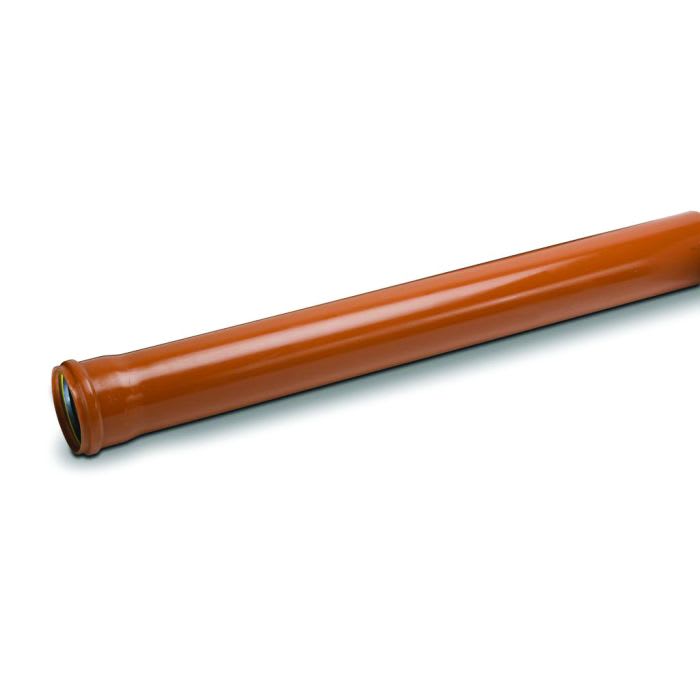Underground Drainage Pipes
(6 Products)Underground drainage pipes serve as essential conduits within drainage systems, tasked with efficiently directing wastewater, rainwater, and other liquid waste away from buildings and structures. Installed discreetly beneath the ground's surface, these pipes operate unseen, ensuring both practical functionality and aesthetic appeal.
We stock a range of compatible underground drainage products on our underground drainage homepage.
What Are Underground Drainage Pipes?
Underground drainage pipes are designed to transport wastewater, rainwater, and other forms of liquid waste away from buildings and structures to appropriate disposal points. These pipes are typically installed beneath the ground surface, hidden from view, to maintain aesthetics and functionality.
Benefits of Underground Drainage Pipes
- Cost-Effectiveness: Underground drainage systems are a cost-effective solution for managing wastewater and preventing water damage to properties.
- Longevity: High-quality materials and proper installation ensure that underground drainage pipes have a long service life.
- Maintenance: Once installed, underground drainage systems require minimal maintenance, saving time and resources.
- Hygiene: Efficient drainage prevents water stagnation, which can attract pests and promote the growth of harmful bacteria.
Types of Underground Drainage Pipes
- Plastic Pipes: Polyvinyl chloride (PVC) and high-density polyethylene (HDPE) are among the most common materials used for manufacturing underground drainage pipes. Plastic pipes are lightweight, durable, and resistant to corrosion, making them suitable for various applications.
- Cast Iron Pipes: While less common in modern installations, cast iron pipes were traditionally used for underground drainage systems. They offer exceptional strength and durability but are heavier and more expensive than plastic alternatives.
- Soil Pipes: Soil pipes are specifically designed for the disposal of human waste (sewage) and are part of the underground drainage system in residential and commercial buildings.
Underground Drainage Pipe Installation
Installing underground drainage pipes requires adherence to building regulations and best practices. Proper planning, excavation, alignment, and sealing are essential steps to ensure the longevity and efficiency of the drainage system.
It's crucial to secure the pipes and fittings adequately to prevent displacement or damage over time.
We stock a range of underground drainage supplies, as well as general drainage products on our Drainage homepage. From sewer pipes and manhole covers to inspection chambers, find a vast array of drainage products to find the perfect fit for your project.
Frequently Asked Underground Drainage Pipes Questions
What Sizes are Available for Underground Drainage Pipes?
Underground drainage pipes come in various sizes, but the 110mm diameter is one of the most popular sizes for residential and commercial applications. Other sizes, such as 160mm, are also available to accommodate specific project requirements.
What Types of Fittings are Used with Underground Drainage Pipes?
Underground drainage fittings include bends, junctions, gully traps, rodding eyes, and inspection chambers. These fittings facilitate smooth flow and ensure proper connectivity within the drainage system.
How Long Do Underground Drainage Pipes Last?
The lifespan of underground drainage pipes depends on various factors, including the quality of materials used, installation techniques, and maintenance practices. High-quality pipes installed correctly can last for several decades with minimal upkeep.
A sewer pipe, which is a specific type of underground drainage pipe designed to carry sewage and wastewater from buildings to treatment facilities, typically has a durable construction to withstand the corrosive nature of sewage.
Proper installation and regular maintenance can further extend the lifespan of sewer pipes, ensuring efficient wastewater management for years to come.
What Is The Difference Between Land Drainage & Underground Drainage Pipes?
- Land Drainage: Land drainage primarily focuses on managing surface water and excess moisture in the soil to improve agricultural productivity, prevent waterlogging, and control erosion. It involves techniques such as installing perforated pipes or tile drains beneath the ground surface to facilitate the removal of water from the soil.
- Underground Drainage: Underground drainage systems are designed to collect and transport wastewater, sewage, and rainwater away from buildings and structures to appropriate disposal points. These systems help maintain hygiene, prevent water damage to properties, and ensure the efficient disposal of liquid waste.



